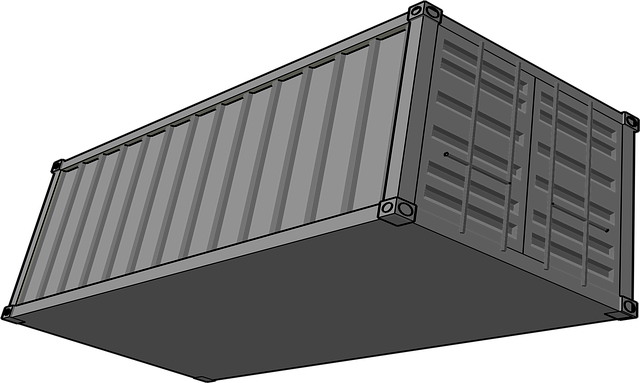“Unraveling the car registration process in California? This comprehensive guide will navigate you through each step, from initial preparation to final certification. First, grasp the fundamentals of California’s car registration process and the crucial role of DMV VIN verification. Next, assemble required documents, prepare your vehicle for inspection, and facilitate a smooth title transfer. Master the application form, pay relevant fees, and soon, you’ll hold your California registration certificate in hand.”
- Understanding the California Car Registration Process
- Gathering Necessary Documents for DMV Vin Verification
- Preparing Your Vehicle for Inspection and Title Transfer
- Completing the DMV Registration Application Form
- Paying Fees and Obtaining Your California Registration Certificate
Understanding the California Car Registration Process

In California, registering a car involves several steps that can seem daunting but are designed to ensure road safety and proper vehicle documentation. The process begins with a crucial step: DMV (Department of Motor Vehicles) VIN verification. This involves confirming the vehicle’s identity using its unique 17-digit Vehicle Identification Number (VIN). It’s essential to have accurate information from the car’s manufacturer, including the make, model, year, and previous ownership details.
Once you’ve gathered these, you can schedule a DMV visit or utilize online services for faster processing. A mobile VIN verifier can also be employed for added convenience. This tool allows you to conduct a vin inspection remotely, providing peace of mind before committing to the registration process. Following this initial verification, expect to provide additional documents like proof of insurance, owner’s identity, and payment for registration fees.
Gathering Necessary Documents for DMV Vin Verification

Before heading to the DMV for car registration, make sure you gather all the essential documents required for a successful dmv vin verification. This process is crucial to ensure that your vehicle’s identification number (VIN) is accurate and matches the data in the manufacturer’s records. Prepare the following documents:
1. Your valid driver’s license or state ID card.
2. The title of ownership for the vehicle, if available.
3. A current registration certificate from your previous state, if you’ve recently moved.
4. Proof of insurance, which is a mandatory requirement.
5. For classic cars or vehicles over 10 years old, you might need additional documents related to their history and restoration.
Additionally, consider the option of utilizing mobile vin inspection services for convenience and time-saving benefits, especially if you’re unsure about the process. This modern approach allows you to complete the verification from the comfort of your home or on-the-go.
Preparing Your Vehicle for Inspection and Title Transfer

Before heading to the DMV for registration, it’s crucial to ensure your vehicle is prepared for both inspection and title transfer. Start by gathering all necessary documents, including your vehicle’s registration, proof of insurance, and identification. Next, perform a quick mobile VIN verification (using a reliable mobile vin verifier) to confirm that your Vehicle Identification Number (VIN) is accurate and matches the details in your paperwork. This step is essential as it helps avoid delays during the inspection process.
Additionally, make sure your vehicle is clean and well-maintained for the inspection. Check that all lights, signals, and safety features are functioning properly. Ensure there are no outstanding mechanical issues, as these could cause complications during the dmv vin verification process. A thorough preparation will not only streamline the registration but also guarantee a safer driving experience.
Completing the DMV Registration Application Form

To begin the registration process for your car in California, you’ll need to fill out the DMV Registration Application Form, which can be obtained either online or at a local DMV office. This form requires detailed information about your vehicle, including its make, model, year, and unique identifying number (VIN). It’s crucial that the VIN is accurately recorded as it undergoes a verification process through the Department of Motor Vehicles (DMV) to ensure the vehicle’s authenticity and avoid any potential fraud or theft issues.
One efficient way to facilitate this verification is by using a mobile vin verifier or conducting a mobile vin inspection. These services enable you to quickly and conveniently confirm your car’s VIN details, ensuring they match the information on file with the DMV. This step simplifies the registration process, saves time, and promotes accuracy, especially when transferring titles or registering vehicles that have been purchased from out of state.
Paying Fees and Obtaining Your California Registration Certificate

After completing the registration process, it’s time to address the financial aspect—paying the fees associated with registering your vehicle in California. The state’s Department of Motor Vehicles (DMV) requires several charges, which include a registration fee and a vehicle identification number (VIN) verification fee. Ensure you have funds ready for these payments as they are non-negotiable. The DMV accepts cash, check, and debit/credit cards. Online payment methods are also available, streamlining the process further. Upon successful payment, the DMV will issue your California registration certificate, officially recognizing your vehicle’s status within the state.
For added convenience, many Californians opt for a mobile VIN verification service to validate their vehicles’ details with the DMV. This process involves a professional inspector using specialized tools to cross-reference your car’s information, including its VIN, against the DMV’s records. With this step complete, you’re one closer to achieving full registration and legalizing your vehicle on California’s roads.
Registering a car in California involves understanding the state’s process, gathering essential documents for DMV VIN verification, preparing your vehicle for inspection and title transfer, completing application forms, and paying applicable fees. By adhering to these steps, you’ll be well on your way to securing your California registration certificate, ensuring a smooth and efficient experience.
